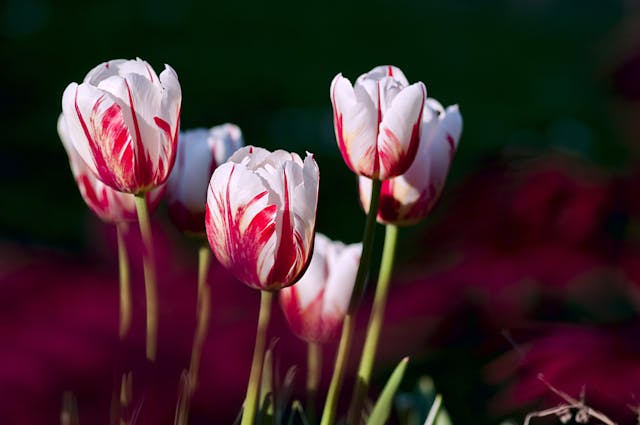
Why was there a tulip bubble? There was a tulip bubble in Holland and across Europe in the 16th century because tulips were rare and because people didn’t want to lose out on an opportunity to make money.
The tulip bubble, also called tulipmania, is a good showcase for human nature. It shows how people let their judgement get the better of them when they might miss an opportunity. It shows how we value things for their financial value and not their worth. And it shows how we like to believe in a good story of greed and people getting their comeuppance. Karma, if you will. Let’s look at what happened.
Tulips are native to Central Asia and they made their way into Europe via the Ottoman Empire and the spice routes. A lot of things reached Europe this way. Tulips were rare and not grown in Europe, so they became a luxury. They were often found in the houses of the wealthy. Tulips were difficult to grow and it could take seven years for a tulip planted as a seed to flower. In the early 17th century, Dutch tulip growers worked out that the plants grew a bulb under the ground and this bulb could be removed and stored. When it was planted, it would flower the next year. In this way, tulip bulbs could be stored for a long time and sold more easily. That brought their price down a little. At that point, tulips were basic colors, but one bulb was infected with a virus that made the tulip that grew from it come out in a variety of mixed, striped colors. That was called a broken bulb and they were extremely popular. Because they were rare and sought after, their price started to go up.
When the price of something goes up, the manufacturers will make more of that thing to meet the new demand. Once the supply has equaled the demand, the price will come down again. You can’t do that with tulip bulbs because the number of tulips that have been planted for the following year is already decided. It takes one or two years for the supply to increase, which means the demand will keep going up. And that is where the tulip bubble began. Throughout history, people have bought things hoping that the price will go up and they will be able to sell them for a profit. That is why people buy art and rare single malt. Many people that invest in something don’t care about the product itself, just that the price will go up.
From 1634, the price of tulip bulbs had risen to the point that speculators began to join the market. These are people who only buy in the hope that the price will go up again. By 1636, the price of some tulip bulbs had reached hundreds of thousands of dollars, possibly even a million. Other people saw the rise in prices and wanted to make some money themselves. At this point the bubble starts to inflate itself. As more people try to buy bulbs, the demand pushes the price up, and as the price goes up, more people want to buy. At this point, a lot of people started to borrow money to buy bulbs, or parts of bulbs. The interest spread across Europe and this only served to push the price up further. By February 1637, the bubble burst. A product like this, where the price is far higher than the individual worth of the item, can only keep going up so long as people are willing to pay more. In February, people stopped buying. Nobody wanted to pay the price. Of course, once this happens, the bubble bursts. People are suddenly afraid that they won’t be able to sell their bulbs, so the price starts to drop. The dropping price pushes other people to sell and there is now more supply than demand. The price keeps dropping. People are left with worthless tulip bulbs and those who borrowed to buy tulip bulbs are left with debt to repay. And that was the short lived tulip bubble.
Bubbles like this show how people are eager to take a risk when they think they might be missing out on something. I don’t think this is greed. It is more a fear that we are missing out on this great opportunity. We become so afraid that we don’t listen to our judgment. It also shows the interesting fact that we put more importance on the value of a thing than on its worth. Wines from the 17th century sell for vast sums of money, but they probably don’t taste very good. People are not buying them to drink, just as an investment. It also shows that we like a good story of people taking risks and then being shown to look foolish. Perhaps it makes us feel better about not taking risks. This is all the more true because the story of the tulip bubble is mostly an exaggerated story. It did happen, but it did not affect the whole of Europe. It did not bankrupt huge numbers of people and push the Dutch economy to the brink. It was written by a Scottish journalist called Charles Mackay in 1841, and he appears to have greatly exaggerated things. And this is what I learned today.
Sources
https://www.bbc.com/news/business-51311368
https://en.wikipedia.org/wiki/Tulip_mania
https://en.wikipedia.org/wiki/Bulb
https://www.history.com/articles/tulip-mania-financial-crash-holland
Photo by Pixabay: https://www.pexels.com/photo/white-and-red-tulip-flowers-69465/
